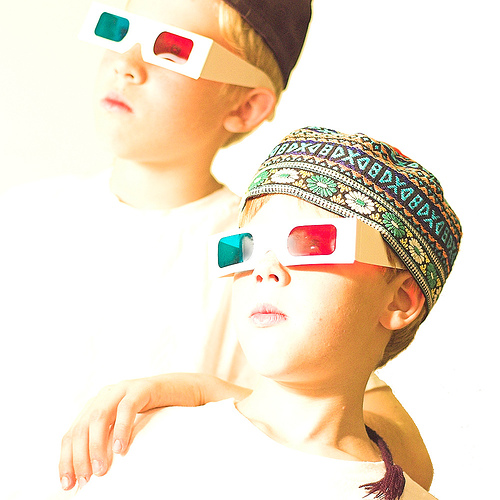For many people, the idea of 3D makes them think immediately of the rather naff cardboard glasses which used to be given away with comic books and at the cinema in the 1980’s with the one red lens and one green. Sadly, not only were these often ineffective but there were also extremely uncomfortable and it seems little wonder that 3D did not take off when these were the only option available.
Modern 3D is a little different and when it comes to buying a 3D TV, you may find that you have more options than you think.
Active shutter
These are batter powered glasses which sync with the television to give each eye the image it needs to convert the image on screen into 3D. This is made possible when the glasses polarise the image on screen into two and feed a slightly different feed to each eye enabling the graphics to “come alive”
Although the high technical ability of these glasses might sound appealing, they are not without their problems. They can be very expensive and consumers are reporting that they’re also uncomfortable over long periods of time so if the wearer intends to watch an entire feature film in 3D it’s likely that they would be uncomfortable throughout. There is also the fact that in order to get the full effect of 3D, the wearer would need to look directly at the screen. This means having to sit upright so leaning back is ruled out, making for a very formal viewing experience.
Glasses free
Gadgets such as the Nintendo 3DS which give a 3D effect without glasses (known as being auto-stereoscopic) have been well received so far, and industry insiders are speculating that this means that auto-stereoscopic TV’s can’t be far behind.
These already exist in Japan and there is speculation that a UK launch isn’t far behind, with Toshiba apparently working on a model which would be consumer ready by 2013.
The question for many is; how would a glasses-free 3D TV work? Whilst glasses are traditionally used to differ the image for the naked eye, auto-stereoscopic glasses would rely on a lens built into the actual TV to do the job instead.
Whilst the technology is available, a question for manufacturers is one of quality. Having the 3D lens fitted into the screen means that the resolution of the picture would be lost. The panel would need to have a 4k2k resolution resulting in a loss of detail. As well as being unappealing in itself, this could cause problems for the eye of the viewer who might subconsciously try to bridge the gap between the pixels, leading to an uncomfortable viewing experience.
A further problem is similar to the current issue of needing to watch the television “head on”. without being bolt upright and right in front of the screen, the effect could be lost quickly. This means no slouching, no lying down and no crowds watching the television.
That said, 3D laptops are ready to go and if Toshiba are preparing an auto-stereoscopic TV, then the chances are that other retailers will quickly follow suit.
This is a guest post from Thomas Andrews who lives in London, blogs on technology, digital cameras and the latest gadgets reviews.

